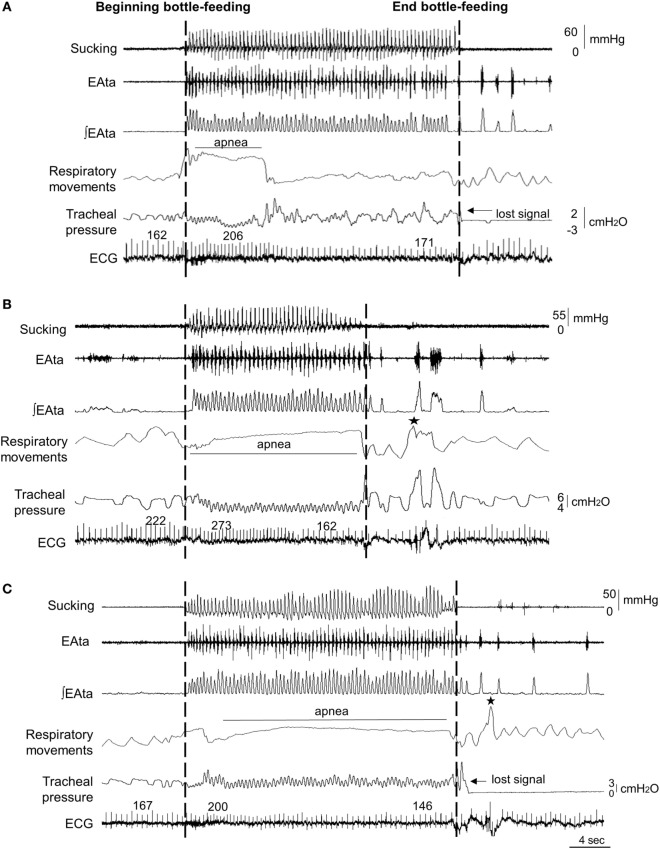Figure 1.
Sample tracings of bottle-feeding during no respiratory support (control condition) (A), nasal continuous positive airway pressure (nCPAP) 6 cmH2O (B) and high-flow nasal cannula (HFNC) 7 L/min (C) in one full-term lamb, showing decreased feeding duration with nCPAP 6 cmH2O only. Respiratory inhibition (apnea) was unusually pronounced during nCPAP and HFNC in this particular lamb compared to all the other lambs. The two dashed lines indicate the bottle-feeding period. Abbreviations from top to bottom: sucking (positive expression pressure on the bottle teat); EAta, electrical activity of the thyroarytenoid muscle for recording swallowing activity; (∫EAta, moving time averaged EAta; respiratory movements, sum signal of the respiratory inductance plethysmography; ECG, electrocardiogram; and ★, body movements. Of note, the oxygen hemoglobin saturation signal was not adequate in this lamb due to dark pigmentation of the tail.

